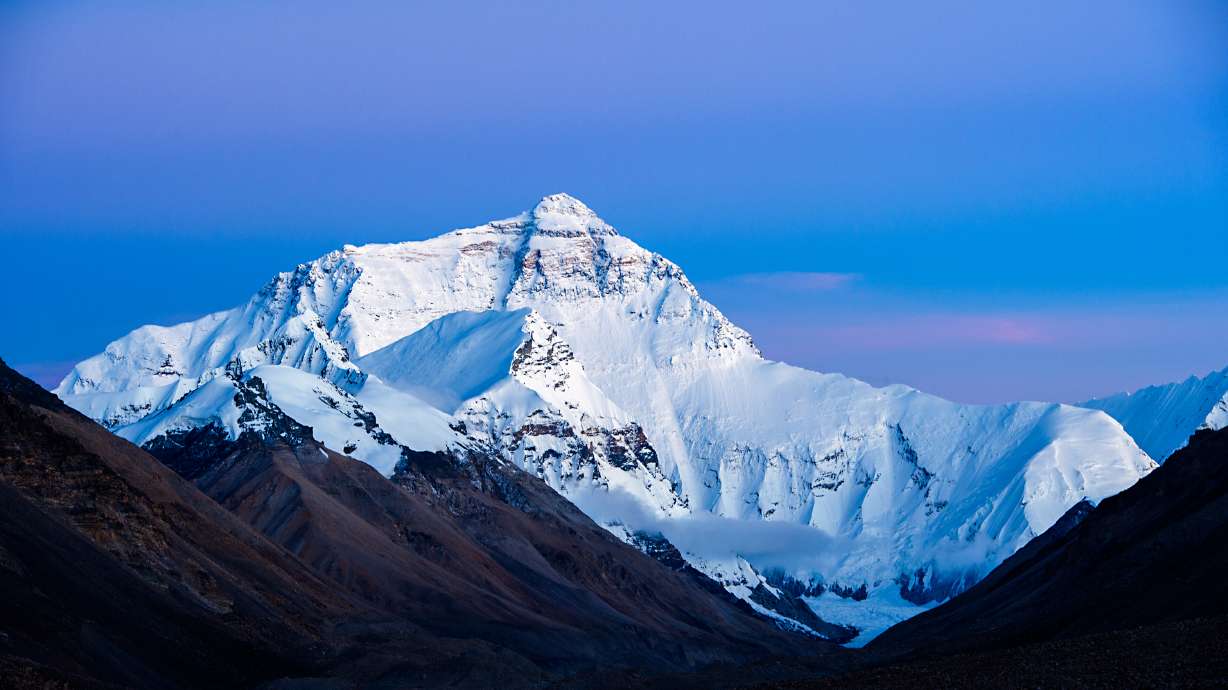Estimated read time: 3-4 minutes
This archived news story is available only for your personal, non-commercial use. Information in the story may be outdated or superseded by additional information. Reading or replaying the story in its archived form does not constitute a republication of the story.
ORONO, Maine — The highest glacier on the world's tallest mountain is losing decades worth of ice every year because of human-induced climate change, a new study shows.
The findings serve as a warning that rapid glacier melt at some of the Earth's highest points could bring worsening climate impacts, including more frequent avalanches and a drying-up of water sources that around 1.6 billion people in mountain ranges depend on for drinking, irrigation and hydropower.
Ice that took around 2,000 years to form on the South Col Glacier has melted in around 25 years, which means it has thinned out around 80 times faster than it formed.
While glacier melt is widely studied, little scientific attention has been paid to glaciers at the highest points of the planet, the researchers argue in the study, published in Nature Portfolio Journal Climate and Atmospheric Science.
A team of scientists and climbers, including six from the University of Maine, visited the glacier in 2019 and collected samples from a 10-meter-long (around 32 feet) ice core. They also installed the world's two highest automatic weather stations to collect data and answer a question: Are the Earth's most out-of-reach glaciers, hardly reached by people, impacted by human-linked climate change?
"The answer is a resounding yes, and very significantly since the late 1990s," one of the authors, Paul Mayewski from the University of Maine, said in a press release.
The researchers said that the findings not only confirmed that human-sourced climate change reached the highest points on Earth, but that is it was also disrupting the critical balance that snow-covered surfaces provide.
"Everest's highest glacier has served as a sentinel for this delicate balance and has demonstrated that even the roof of the Earth is impacted by anthropogenic source warming," the researchers note in their paper.
The findings show that once the glacier's ice became exposed, it lost around 180 feet of ice in a quarter-century. The researchers note that the glacier has transformed from consisting of snowpack into predominantly ice, and that change could have started as early as the 1950s. But the ice loss has been most intense since the late 1990s.
This transformation to ice means the glacier can no longer reflect radiation from the sun, making its melt more rapid.
Model simulations show that because of the extreme exposure to solar radiation, melting or vaporization in this region can speed up by a factor of more than 20, once snow cover transforms to ice. A drop in relative humidity levels and stronger winds are also factors.
In addition to all the impacts on those who depend on water from glaciers, the current rate of melt would also make expeditions on Mount Everest more challenging, as snow and ice cover thin further over the coming decades.
The 2019 expedition set three Guinness World Records: The highest altitude ice core taken at 8,020 meters, the highest altitude microplastic found on land, which were likely from clothing or tents, found at 8,440 meters; and the highest altitude weather station on land, installed at "Balcony," a ridge sitting 8,430 meters above sea level. The station is the first installed in what is known as the "death zone" for its dangerous hiking conditions.








